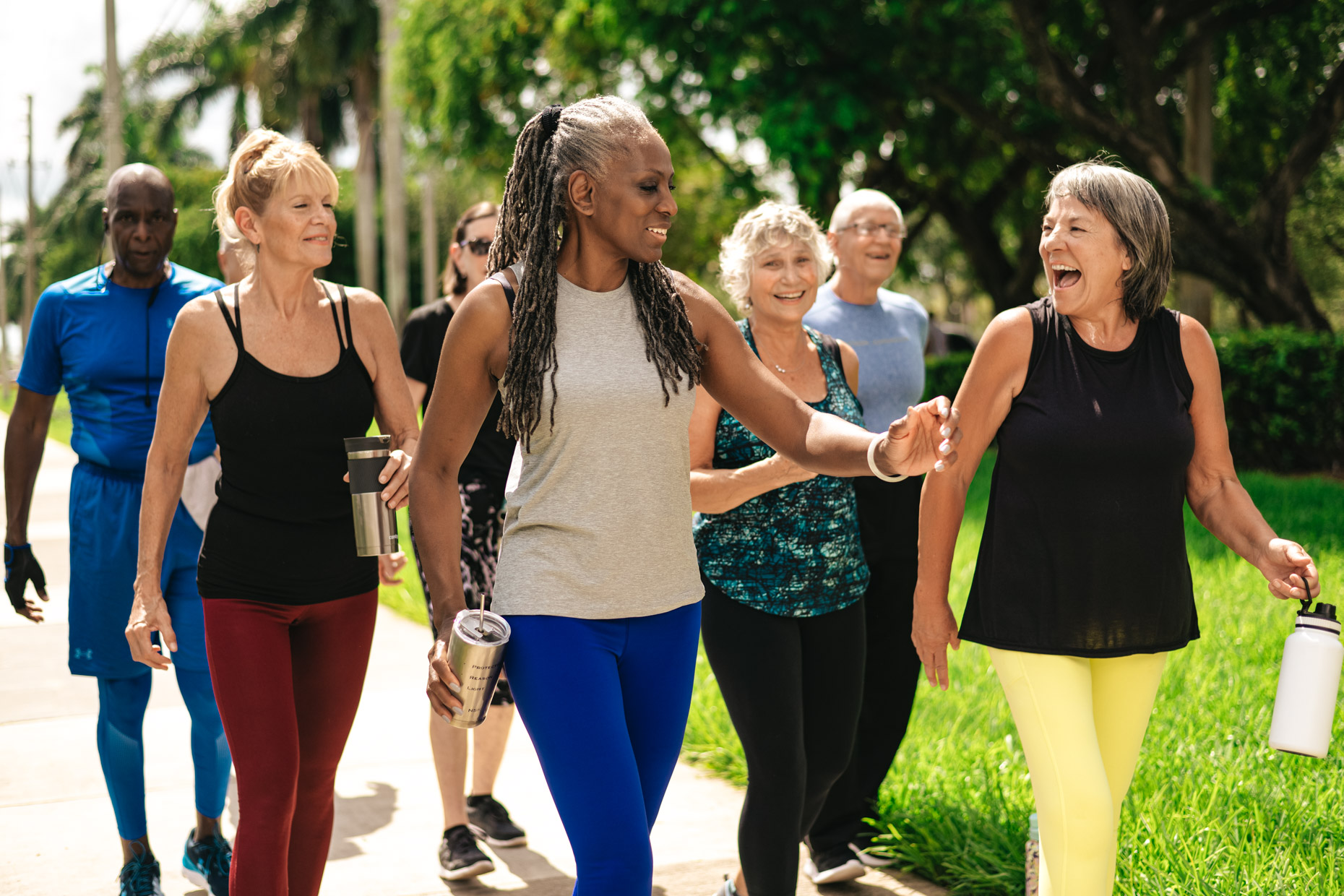In the world of fitness, trends come and go, but one philosophy has stood the test of time and continues to gain momentum: functional fitness. It’s more than just lifting weights or running on a treadmill. It’s about training your body to perform real-life activities with strength, ease, and efficiency. Whether you’re a seasoned athlete or just starting your fitness journey, functional fitness offers a path to a healthier, more capable you.
What is Functional Fitness?
Functional fitness is a type of training that focuses on movements that mimic activities we perform in our daily lives. Think about bending down to pick up a child, carrying groceries, or climbing stairs. These actions require a combination of strength, flexibility, balance, and coordination — all of which are developed through functional fitness exercises.
The Benefits of Functional Fitness
Improved Everyday Movement
From carrying groceries to playing with your kids, functional fitness hones the movements that underpin your daily life. By strengthening the muscles and patterns involved in these activities, you enhance your ability to perform them with ease and reduce your risk of injuries.
Enhanced Athletic Performance
Whether you’re a seasoned athlete or a weekend warrior, functional fitness elevates your game. By developing strength, power, agility, and coordination, you gain a competitive edge and unlock your full athletic potential.
Increased Core Strength
A strong core serves as the foundation for virtually all movement. Functional fitness exercises inherently engage your core muscles, fostering stability, balance, and improved posture.
Improved Balance and Coordination
Functional fitness challenges you to move in multiple planes and directions, refining your balance and coordination. This translates to better agility, graceful movements, and reduced risk of falls.
Boosted Metabolism
Functional fitness workouts are often high-intensity, involving compound movements that engage large muscle groups. This elevates your heart rate, ignites calorie burn and boosts your metabolism, even after the workout ends.
Mental Acuity
The dynamic nature of functional fitness requires focus and concentration. This mental engagement can enhance your cognitive function, improve reaction time, and foster a greater mind-body connection.
Adaptability and Versatility
Functional fitness isn’t confined to a gym or specific equipment. You can adapt the exercises to any setting and fitness level, making it a versatile approach that caters to your individual needs and preferences.
Fun and Engaging
Say goodbye to monotonous gym routines. Functional fitness injects fun and variety into your workouts, keeping you motivated and engaged in your fitness journey.
Embracing the Power of Functional Fitness
From enhancing everyday movements to elevating athletic performance, functional fitness offers a plethora of benefits that extend far beyond the gym. By mimicking real-life movements and challenging your body in new and dynamic ways, you cultivate strength, agility, balance, and overall well-being. Let the power of functional fitness unlock your full potential for a healthier, more active, and fulfilling life.
Basic Functional Fitness Movements
Here are a few foundational movements that are often incorporated into functional fitness routines. These movements engage multiple muscle groups and challenge your body in ways that translate to real-world activities.
Squats: A fundamental movement that strengthens your legs, glutes, and core. Squats mimic the action of sitting down and standing up, which is something we do countless times throughout the day.
Lunges: Another great exercise for lower body strength and balance. Lunges simulate the motion of walking and running and can improve your stability and coordination.
Push-ups: A classic exercise that works your chest, shoulders, triceps, and core. Push-ups are a functional movement that helps you push objects away from your body.
Pull-ups: This exercise strengthens your back, biceps, and forearms. Pull-ups are a functional movement that mimics the action of pulling yourself up or lifting objects towards your body.
Planks: A core-strengthening exercise that challenges your entire body. Planks improve your stability and can help reduce back pain.
Getting Started with Functional Fitness
Embarking on a functional fitness journey is an empowering decision towards a life of greater physical capability and overall well-being.
Unlike traditional gym workouts that often isolate specific muscle groups, functional fitness focuses on movements that mimic real-life activities, making your body stronger and more adaptable for the challenges you face every day. Whether it’s carrying groceries, playing with your kids, or simply moving with ease and confidence, functional fitness equips you with the tools to excel.
Sign up for your free three-day pass today!
However, like any new endeavor, it’s important to approach functional fitness with the right mindset and strategies. Here are some key principles to guide you as you get started:
1. Start Slow and Steady
Think of your functional fitness journey as a marathon, not a sprint. Especially if you’re new to exercise or returning after a break, it’s crucial to begin with a foundation of bodyweight exercises. These movements, such as squats, lunges, push-ups, and planks, engage multiple muscle groups and build core strength without the need for additional equipment. As your body adapts and gets stronger, you can gradually increase the intensity by adding weights, resistance bands, or more complex exercises.
Remember, the goal is to progress sustainably. Pushing yourself too hard too soon can lead to injuries and setbacks, hindering your long-term progress. Listen to your body, respect its signals, and prioritize rest and recovery.
2. Prioritize Proper Form
In functional fitness, the quality of your movement is paramount. Proper form ensures that you’re targeting the right muscles, maximizing the benefits of each exercise, and minimizing the risk of injury. It’s worth investing in a few sessions with a qualified trainer to learn the correct techniques for foundational movements. A trainer can also assess your individual strengths and weaknesses, tailoring a program that suits your needs and goals.
As you progress, be mindful of maintaining good form even as you increase the intensity. It’s better to perform fewer repetitions with perfect technique than to rush through a set with compromised form. Remember, functional fitness is about building sustainable strength and movement patterns, not simply achieving a certain number of reps.
3. Embrace Variety and Enjoy the Journey
One of the most exciting aspects of functional fitness is the sheer diversity of exercises and training modalities available. From kettlebell swings and medicine ball slams to bodyweight circuits and agility drills, there’s something to challenge and inspire everyone. Don’t be afraid to step outside your comfort zone and explore different movements.
Mixing up your workouts not only prevents boredom but also stimulates different muscle groups, promotes overall fitness, and challenges your body in new ways. You might discover hidden talents or passions you never knew you had! The key is to find activities you enjoy and that keep you motivated to show up consistently.
4. Listen to Your Body’s Wisdom
Your body is an intelligent system, constantly communicating its needs and limitations. Pay attention to any pain or discomfort during your workouts. If something doesn’t feel right, stop and reassess. It’s okay to modify exercises, take a break, or even skip a workout if your body needs rest.
Remember, fitness is a lifelong journey, not a destination. Pushing through pain can lead to injuries that sideline you for weeks or even months. By honoring your body’s signals and prioritizing recovery, you’ll ensure a sustainable and enjoyable fitness experience.
Sample Functional Fitness Workout for Beginners
Here’s a sample workout to get you started. Perform each exercise for 10-12 repetitions, resting for 30 seconds between sets. Repeat the circuit 2-3 times.
Bodyweight Squats
Lunges (alternating legs)
Push-ups (modified on knees if needed)
Plank (hold for 30-60 seconds)
Bodyweight Rows (using a sturdy table or TRX straps)
Functional fitness is an effective and accessible way to improve your overall health and fitness. By training your body to perform real-life movements, you can enhance your athletic performance, boost your metabolism, and make everyday tasks easier. Whether you’re a beginner or a seasoned athlete, functional fitness has something to offer everyone.
Sign up for your free three-day pass today!
Ready to unlock your inner athlete? Incorporate functional fitness exercises into your routine and experience the benefits for yourself. Remember to start slow, focus on form, and listen to your body. If you need guidance, don’t hesitate to seek out a qualified trainer. With dedication and consistency, you’ll be amazed at what your body can achieve.
FAQ
What is functional fitness?
Functional fitness is a type of training that focuses on movements that mimic activities we perform in our daily lives.
What are the benefits of functional fitness?
Functional fitness improves everyday movement, enhances athletic performance, increases core strength, improves balance and coordination, and boosts metabolism.







